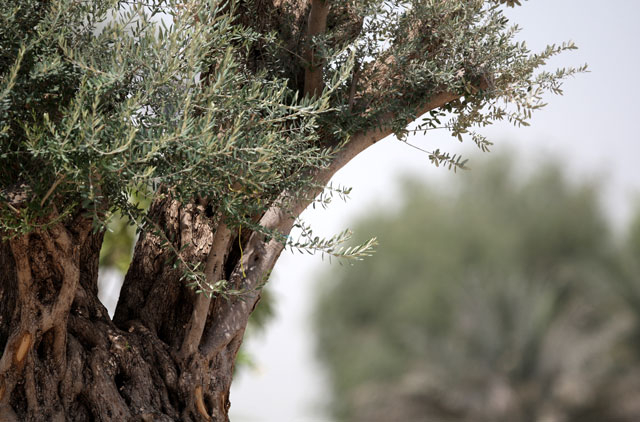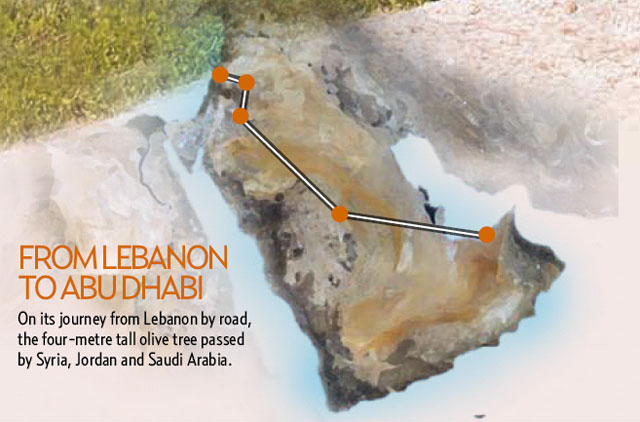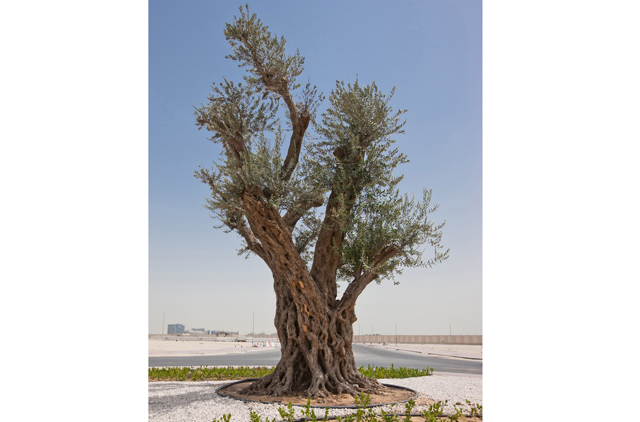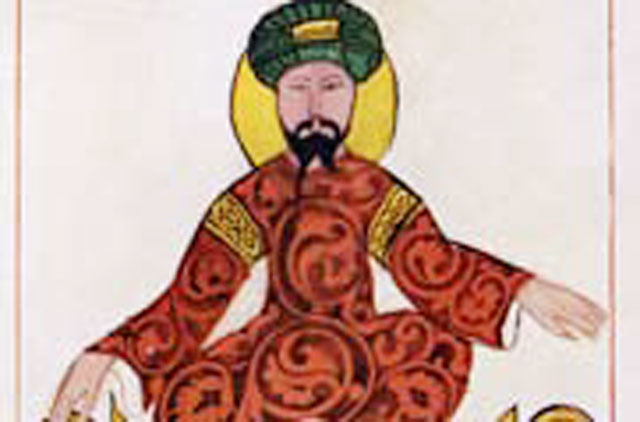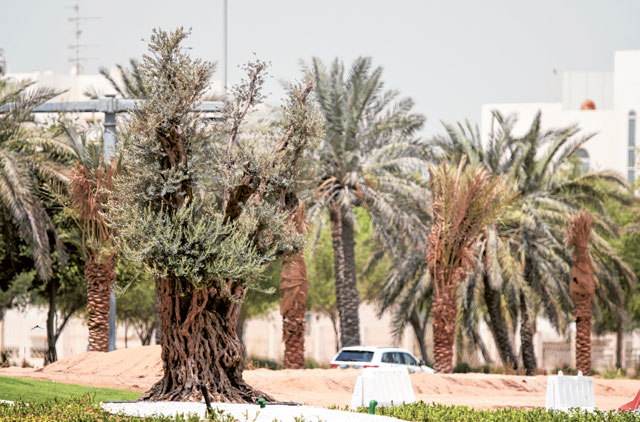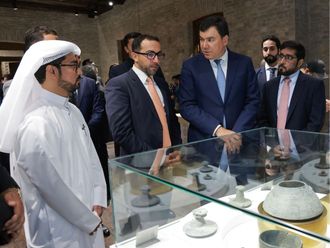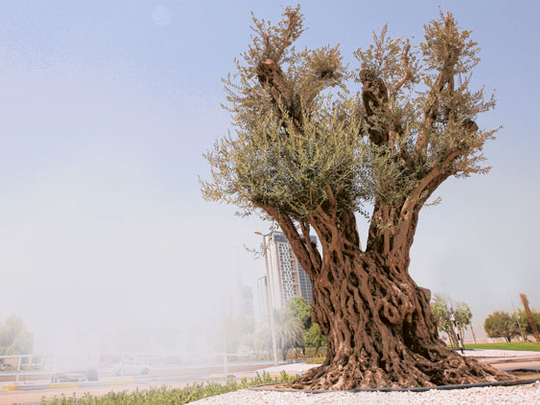
Abu Dhabi: On the side of a busy highway in the capital, a lone tree with silvery grey leaves stands guard. The olive tree, a native of the eastern Mediterranean coast, has been in the UAE for only nine months. But it is already spreading its roots in its new home, and drawing the attention of everyone who passes by it.
The 800-year-old specimen is one of the few olive trees in the UAE, and serves as a piece of art. Brought into the country to beautify the surrounding landscape, the tree today occupies pride of place at the entrance to the future Rawdhat residential district in Abu Dhabi city.
The tree, which weighs a massive five tonnes, was originally brought from Lebanon by road. On its two-week journey to the UAE, the four-metre tall plant passed by Syria, Jordan and Saudi Arabia.
"Having witnessed radical changes in culture, civilisation and lifestyle, this magnificent plant has now found a permanent home in the UAE, and it will be part of a special environment for the future residents of Rawdhat," Saeed Al Yabhouni, vice-president of strategy development at Reem Developers, told Gulf News.
Historic significance
"We wanted the centrepiece to be unique and chose the olive tree because of its character and historic significance. It will give people a sense of arrival when they enter Rawdhat and those who live, work and visit will appreciate it for many years to come," he added.
Olive trees such as this particular specimen, part of the Olea Europaea species, are not common to the UAE, but grow wild in other parts of the Middle East. A robust plant that is also sometimes called the Little Ollie, it can grow in rocky areas and requires very little water to survive.
The fruits of the Olea Europaea, which can range from green to black, depending on ripeness, have been one of the major sources of olive oil since prehistoric times.
"The tree is part of a species that has been cultivated for the past 7,000 years," Al Yabhouni said.
Although fruit production decreases by the time the tree reaches 500 years of age, their artistic beauty is greatly valued and the trees are often used for decorative purposes.
"Because of decreased productivity, older trees are often chopped down. This tree will however continue to provide a welcoming sensation to Rawdhat residents for years to come," the vice-president added.
The uprooting of a tree is a delicate, technical process that is carried out by specialists.
First, the foliage is reduced and light machinery is used to dig the soil around the roots. Following this, heavy equipment and cranes support and lift the tree onto the vehicle for transportation.
"Special care is taken to decide the correct amount of water as the roots grow again," Al Yabhouni explained.
Even in religious texts, the olive tree is a harbinger of peace.
Explaining their significance, Shaikh Ahmad Al Mousa, an official at the General Authority for Islamic Affairs and Endowments (Awqaf), said the tree and its fruits provide nutrition and are used for medical purposes.
"It is mentioned in several verses in the holy Quran, and it is a mark of the holy lands where Jesus was born," Al Mousa added.
Life of the species
- 7,000: years the olive tree has been in cultivation
- 50: years the age after which fruit output decreases 800
Tree facts
- Uncommon to the UAE, but growing wild in other parts of the Middle East
- Require very little water to grow
- Height: 8-15 metres on average
- Trunk: Short and twisted which is used to produce fine wood
- Leaves: Oblong, silvery green leaves are often used in medicines for their anti-aging, immune system-stimulating and antibiotic properties.
- Flowers: White feathery flowers which become small fruits known as olives.
- Fruits: Olives usually 1 to 2.5 cm long, and they are cropped green or purple and turned black artificially. Usually used in cooking, cosmetics, pharmaceuticals, and soaps and as a fuel for traditional oil lamps
From lebanon to Abu Dhabi
On its journey from Lebanon by road, the four-metre tall olive tree passed by Syria, Jordan and Saudi Arabia.
The Qur'an
- Surat At-Teen: "By the fig and the olive. And the Mount of Sinai. And this City of Security. We have indeed created man in the best of moulds." (Surah 95; Verses 1-4)
- Surat Abasa: "For that we pour forth water in abundance. And we split the Earth in fragments. And produce therein corn. And grapes and nutritious plants. And olives and dates. (Surah 80; Verses 25-29)
The Bible
- Jeremiah Chapter 11: The Lord called thy name, A green olive tree, fair, and of goodly fruit: with the noise of a great tumult he hath kindled fire upon it, and the branches of it are broken. (Verse 16)
- Nehemiah Chapter 5: Restore, I pray you, to them, even this day, their lands, their vineyards, their oliveyards, and their houses, also the hundredth part of the money, and of the corn, the wine, and the oil, that ye exact of them. (Verse 11)
In literature
- Odyssey: In Homer's epic tale, the olive tree is depicted as a symbol of power and glory.
- Horace: The famous Roman poet mentions the olive as part of his own diet in his poems.
References in religious texts
In religious texts, the olive has been the symbol of peace, wisdom, glory, fertility, power and pureness in various references.


